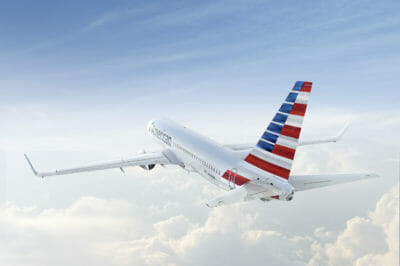There’s a recent article on Huffington Post by consumer advocate Christopher Elliott circulating in the travel world, which I first found thanks to mikel51 on FlyerTalk. Elliott suggests that most airlines (United Airlines in particular) are no longer in the business of transporting passengers but rather selling miles – that the loyalty programs have taken over.
View from the Wing is no fan of Elliott and rightly criticizes some of the facts in the latter’s post. But Elliott’s argument was always too extreme for me and wasn’t what caught my attention. Instead, I find it more interesting that the term everyone is using (in posts by Elliott and his critics) is “loyalty program.”
This post is largely an argument about semantics, and it contains ideas I haven’t fully developed, but I think it’s important that frequent travelers, and those who don’t travel frequently but do collect miles and points, should distinguish between “loyalty” programs and “rewards” programs – regardless of the name that such a program happens to use in its self-description. Both types can offer value to travelers in different ways. Here are my rough definitions of the two:
Loyalty programs target customers who devote a significant amount of their time and money to a specific brand at the expense of other options that may be less expensive, more comfortable, or more convenient. Typically the customer is provided with something he or she can’t buy, or with something very different from the usual item being purchased.
Rewards programs target customers who want to earn a credit toward future purchases. Larger transactions receive larger rewards by definition. These rewards may not be in the form of cash back, but they can operate very similarly. Typically the customer is treated no differently than any other, and the benefit is limited to receiving and redeeming the reward credit.
All frequent customer programs (note I’m trying to avoid labeling them as one or the other) have aspects of both loyalty and rewards programs, so I don’t expect them to fit either model perfectly. However, some lean much more toward one side.
Starbucks Rewards, various grocery fuel points, Southwest Rapid Rewards, and IHG Rewards are all examples that I would place in the category of rewards programs. There may be some loyalty component (e.g., earn a free drink slightly faster) but these are often understated. For example, Southwest doesn’t offer much to its best customers, other than letting them board first or go through a faster security line, unless they fly a lot and manage to earn a companion pass — something that does start to look more like a unique benefit of loyalty. Others programs, like IHG Rewards, make almost no distinction between their elite tiers.
Often fixed-value reward currencies play a big role in rewards programs. Rapid Rewards points are always worth the same amount within that fare class and IHG Rewards points can effectively be purchased for 0.7 cents each. These programs are telling you exactly how much your business is worth. The points – or the free coffee – are a rebate that can be worked out to a fixed percentage of every transaction.
On the other side of the aisle, Kimpton Inner Circle, Hyatt Gold Passport, and even Delta Sky Miles are examples that come to mind when I think of loyalty programs. Kimpton provides free nights on a regular schedule just like Starbucks offers free drinks but also mixes it up by offering additional bonus nights each time you try five different properties. Top-tier members even receive a free night at each new hotel, along with a $50 dining credit. There is a clear effort to encourage frequent transactions as well as loyalty to the brand wherever you travel.
Suite upgrades, welcome amenities, and complimentary lounge access are still things that sometimes have a price, like with a rewards program. What sets them apart is that the benefit is intended to be more than a rebate. It provides a better experience with every purchase rather than a free purchase with an experience like any other.
(If it doesn’t make sense why I include Sky Miles in the loyalty category, it’s because I think they generally provide excellent service and benefits to their elite members even if the miles – the rewards program aspect of Sky Miles – pretty much suck.)
More and more it’s important to distinguish rewards programs from loyalty programs when you travel. I eventually decided to leave United Airlines because it felt too much like a rewards program. The miles I earned were valuable, but I didn’t actually want to use them for travel on United. I decided I could earn all the United miles I needed without flying at all, e.g., with a Sapphire Preferred credit card.
Contrast this with Alaska Airlines, where even economy class is a pleasant experience because I know the flight attendant will thank me for my business as an MVP Gold member. I can also cancel flights with no penalty; Alaska knows that I will use that credit to fly with them again in the future. The number of miles I earn is actually a low priority when I fly on Alaska.
A similar game plays out with hotels. It’s actually difficult to earn Diamond status with Hyatt compared to some other programs’ top tiers: no elite credit for most award stays, only a small bonus for carrying a credit card, and multiple rooms don’t earn status even if you pay for them. Other hotels have introduced such “innovations,” and their elite status has become much easier to obtain. But by passing out Gold status like candy to anyone with a credit card, Hilton has also devalued the elite program such that points – the rewards aspect – are all that’s left to strive for. Are Hilton’s points worthless? No. But if you can obtain points elsewhere, is there still a reason to stay at Hilton hotels when you’re paying cash? I don’t think so.
Thus far I’ve explained what I see as the difference between loyalty and rewards programs. I’ve also suggested what I think you should do about it: pay to earn status with loyalty programs and limit yourself to redeeming free travel with rewards programs. But why does this matter, other than giving you ideas to spend your money efficiently?
Once a program shifts its priority from loyalty to rewards, I think it’s hard to stop it from snowballing. Loyalty is difficult to measure and results could be months or years in the future. If estimates are wrong, the costs of providing such benefits could be a serious hardship to the business. Executives who play it safe choose a rewards program. Beyond calculating a table of rebates, estimating breakage (the number of rebates that will not be redeemed), and finding some way to package them in an appealing format, there isn’t much more required. The rewards fund themselves because the provider has already worked them into the cost of your services or sold them at an affordable rate to a third party. At least, this is how I understand them.
As a consumer, it’s your goal to avoid a rewards program in which it has become too easy to cut the size of that rebate. United can easily raise the cost of their award chart. Alaska cannot so easily remove a key benefit like free ticket cancellations. IHG Rewards can easily raise the price of buying points, but Hyatt cannot so easily remove free breakfast for Diamond members. Of course, Hyatt and IHG could do these things, but I believe they have become such a part of their loyalty programs that it would be very unwise without some compelling replacement benefit.
Eventually customers and brands must realize that loyalty involves a commitment from both sides. If a brand breaks that commitment by trying to monetize and fix the cost of benefits, I think its customers will soon find themselves heading down the slippery slope of a rewards program. It’s entirely possible to remain satisfied with that — many people are satisfied with anything that saves them money, and there can still be ways to game the system. In that case, a rewards program should probably be your goal, not just some situation you find yourself tolerating.




